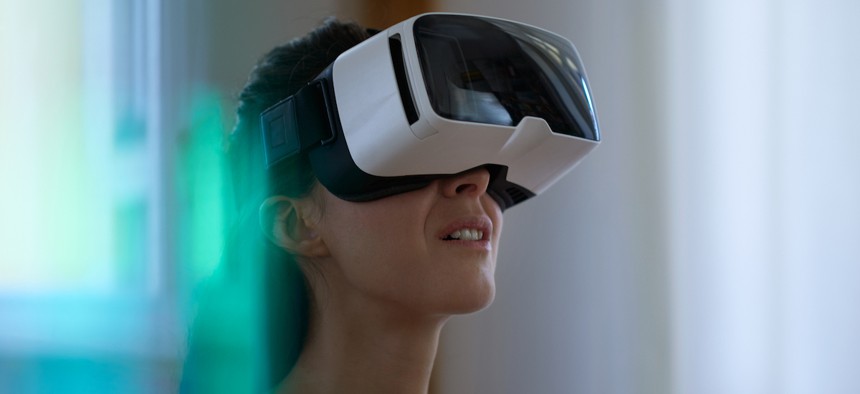Virtual reality helps incarcerated people practice reentry to society in California

Kai Wiechmann via Getty Images
By enabling incarcerated individuals to practice their life and personal skills in virtual reality simulations, officials hope to help them succeed in society and reduce recidivism.
Reentering society after incarceration can be a major challenge for people as they navigate a world that’s starkly different from their life in a facility. From finding housing to interacting with strangers at a grocery store, formerly incarcerated people often struggle to adapt to the drastic change in their environments. That’s why some California institutions have turned to virtual reality tech to help ease their transition.
About 140 miles south of Sacramento, people in the restricted housing unit at the Central California Women’s Facility, or CCWF, have been participating in a weeklong program where they don VR headsets and immerse themselves in various simulations that replicate real-life experiences for four hours each day.
Simulations range from mundane tasks like using a self-checkout kiosk and pumping gas to more high-stake scenarios like going on a date and conducting job interviews. Other scenes include helping users manage conflict resolution or experience travel like roaming the streets of Taiwan and other destination spots, said Lt. Monique Williams, public information officer at CCWF.
Like in a video game, the virtual reality reentry program can help individuals practice real-life situations and explore how different reactions they choose in the simulations impact the outcomes, she said. Those experiences can help people better determine how they will handle interactions and tasks in the real world, which can ultimately help them avoid returning to incarceration or rehabilitation.
People who leave carceral or rehabilitative facilities often report feeling “scared of going out there,” said Maria Sandoval, staff service analyst at CCWF. “They don’t know what to expect, especially with everything in the news, inflation and housing.”
Research shows that individuals transitioning back to society often struggle to secure employment or housing and are likely to lack professional or personal skills that help them reconnect with friends or family.
Program participants have reported, for instance, that the VR simulations removed the pressure of making a mistake and helped them learn quicker without the fear of consequences, Williams explained.
To administer the VR program, CCWF is partnering with Creative Acts, a California-based organization that promotes behavioral change through art. The organization raised their own funds to offer VR headsets from Oculus and other tools to three other California institutions, Williams said.
Creative Acts “came in and worked with individuals that had high rates of … rule violation reports, high incident reports and issues [like] suicidal ideation,” Williams said, adding that facility authorities saw improved behavior among those individuals after participating in the VR simulations.
The reentry program also entails meditation, painting and other artistic expressions to help participants holistically connect with their emotions and other bodily sensations to inform how they conduct themselves.
A separate correctional facility in California, for instance, saw a reduction in participant infractions among individuals who used the VR tool. Between October 2023 and December 2023, the California State Prison’s Corcoran security housing unit saw the number of infractions decrease from 735 to one after individuals participated in the program.
“Some of the input we received from the population is that [VR] made them want to be better people, because it took them outside of the [institution] and made them think of home,” Williams said. “They also said it made them want to travel … and that they really wanted to go out and do better.”






